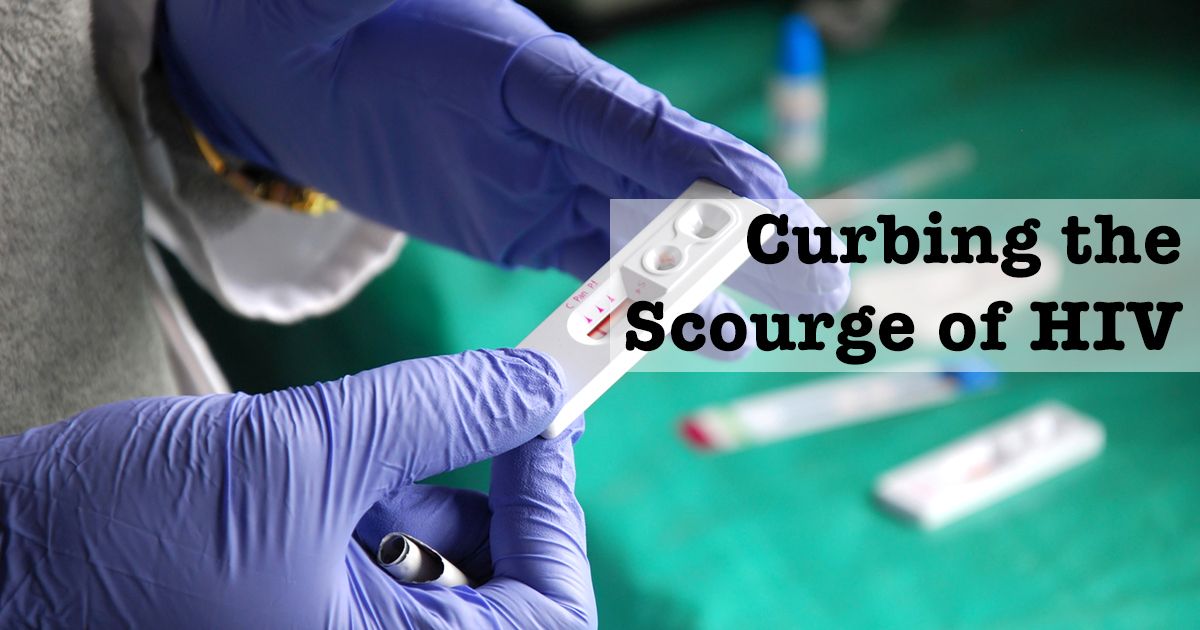Recent advancements in technology and medical practices are helping curb the HIV pandemic that has haunted the globe for decades.
HIV can never be completely eliminated from the body and this deadly virus infects 2 million people annually. Therefore, efforts are being made worldwide to: help those affected by the virus; help prevent the virus from spreading further; and seek a cure.
The goal set by the United Nations (UN) and its partners such as World Health Organization (WHO) is to end the Aids epidemic by 2030. The milestones for the next five years are: to ensure that 90 percent of people who are HIV-positive are aware of their status; to make treatment for HIV available; and monitor that the 90 percent receiving treatment have suppressed viral loads.
Cracking the HIV Code
HIV has kept scientists on their toes to find a cure. This clever and deadly virus has unique capabilities to alter itself making it a challenge to produce effective drugs. It is essential to look into the proteins involved in the virus’s lifecycle in order to develop appropriate drugs. The Capsid protein resides in the inner shell of HIV. It is this protein that forms the entire structure of the virus.
The virus’s genetic information is hidden within the Capsid shell which helps ensure the virus successfully infects the healthy cells. Research is still underway to gain a better understanding of how this protein shields the viral genome. The key to developing an antidote for the virus is to crack the code of the Capsid shell.
A team of scientists lead by Sarafianos at the University of Missouri, School of Medicine, are doing just that. In fact, they have successfully captured a fairly complete model of the Capsid protein. They used a process known as X-ray Crystallography to decipher the protein’s structure. The key to HIV’s adaptability is assumed, to be the numerous water molecules that surrounded the protein. The National Institute of Health has provided a five-year grant worth U.S. $2.28 million to fund the research geared towards finding an effective antiviral that will target the Capsid protein.
Preventing Mother-to-Child Transmission
Would-be parents are encouraged to test for HIV, Syphilis and other Sexually Transmitted Diseases (STDs). In case either of the partners tests positive for the aforementioned diseases, the mother is given antiretroviral drugs to help prevent the baby from being infected.
Unless care is taken during childbirth, there is a 15-45 percent chance of the baby contracting the virus from its mother. Caesarean births are a relatively safer option as opposed to natural childbirth. This is because the child does not come into contact with the mother’s blood or genital fluids. However, women with a low viral load and on suitable antiretroviral treatment may be allowed to undergo natural childbirth.
Breast milk is also a known cause of HIV transmission between mother and child. The HIV-infected cells multiply in breast milk and enter into the child’s body through mucous membranes. The mother’s breast milk can be substituted for formula milk to prevent the transmission of HIV from mother to child.
Cuba has been declared by the World Health Organization (WHO) as the first country to eliminate mother to child transmission of HIV because in 2013 only 2 Cuban babies received the infection from their mothers. The aforementioned steps have been implemented by Cuba, nationwide. Cuba’s success is proof of the possibility to end mother-to-child transmission.
Testing Made Simple
Cambodia is pioneering a community model that promotes fast HIV testing techniques and maximises community outreach.
In 2013 a programme named Smartgirl was launched in Cambodia. The key was to encourage people engaged in the adult entertainment industry to be tested for HIV. Veterans from the adult industry are recruited as counsellors who promote testing. As opposed to the cumbersome traditional HIV test involving drawing blood samples and then testing them in a laboratory environment, a quick finger prick test is being used. This community model proactively reaches out to more people ensuring a greater number of people are tested.
The future of our global fight against the deadly curse of HIV is not at all bleak. The world can be HIV free.

